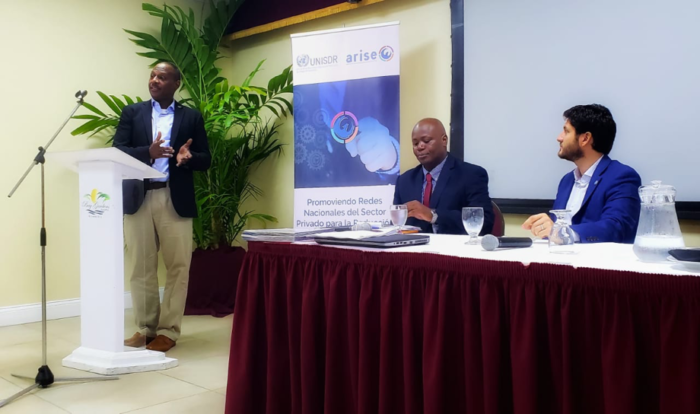By: Carlos Uribe, UNDRR & María Kontro, UNDRR
Why does risk information matter in the Caribbean?
In 1998-2017 disaster-hit countries reported direct economic losses valued at US$ 2,908 billion. Reported losses from extreme weather events rose by 151% compared to the previous 20-year period (UNISDR, 2018). The heaviest cost of storms relative to the size of their economies fell on small island states of the Caribbean. All of the top 10 worst affected countries / territories in terms of losses as a percentage of GDP were small Caribbean countries / territories.
A disaster creates an enormous pressure for the public sector. Considering the disaster consequences, such as context deterioration, migration out of the region, decrease in the purchasing power, the private sector is also severely affected. Without the private sector, the national economy of the country is in danger.
Can understanding of the factual information of disaster impact for the enterprises motivate them to create Business Continuity Plans and offer solutions?
Is there a way for the public-private-partnerships can improve, or even reverse this negative spiral by converting a disaster recovery into an opportunity for build back better and business boost?
Can enhancing the competencies and interest of the public and private sectors in improved risk knowledge, risk management and risk financing, as well as in opportunities for public-private-partnerships for DRR change our way of understanding resilience?
Investing in disasters
The Sendai Framework highlights a lack of regulation and incentives for private disaster risk reduction investment as an underlying risk driver and calls for business to integrate disaster risk into their management practices. Similarly, it states that addressing underlying disaster risk factors through disaster risk-informed public and private investments is more cost-effective than primary reliance on post-disaster response and recovery, and contributes to sustainable development. The World Bank and United Nations Report, `Natural Hazards, UnNatural Disasters – the Economics of Effective Prevention` suggests that prevention measures are very cost-effective, but we still do not invest enough – or more to the point, we can invest smarter. Some interventions do require a substantial financial commitment such as early warning systems, hydro-meteorological forecasts and structural protection. However, a great deal can in fact be achieved with modest investments. Trillions of dollars of new investment is expected in hazard-prone areas by 2030, dramatically increasing the global value of assets at risk. How disaster risk is considered and managed in capital investments, supply chains and operations will be a decisive factor on achieving the Sendai Framework targets.

GAR & GRAF: Providing risk knowledge for a more efficient DRR action
The Global Assessment Report on Disaster Risk Reduction (GAR) and the Global Risk Assessment Framework (GRAF) are instruments to improve the understanding of current and future risks, at all scales, to better manage uncertainties and mobilize people, innovation and finance.
The GAR 2019 is about understanding better the systemic nature of risk, how we are currently able to recognize, measure and model risk, and strategies to enhance the scientific, social and political cooperation needed to move towards systemic risk governance.
The Global Risk Assessment Framework “GRAF” is a response to the challenge we have both created and recognized many other types of risks of the greatest consequences for humankind. GRAF aims to inform decision-making and transform behavior, specifically with respect to systemic risks.
Past GARs have insisted that “risk is everyone’s business.” The new 2019 GAR will further deepen this thought. It be published at the Global Platform for Disaster Risk Reduction in May 2019, and it will be presented for the first time in the Caribbean region at the Understanding Risk conference on 28 May 2019 in Barbados, with a focus on risk information, public-private-partnerships and their effect on disaster risk reduction.
